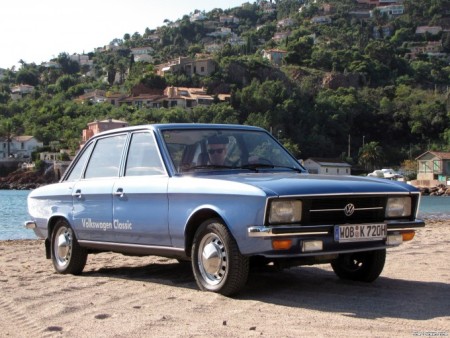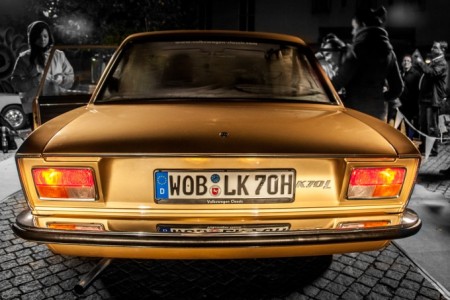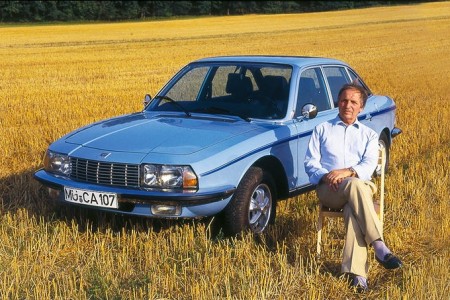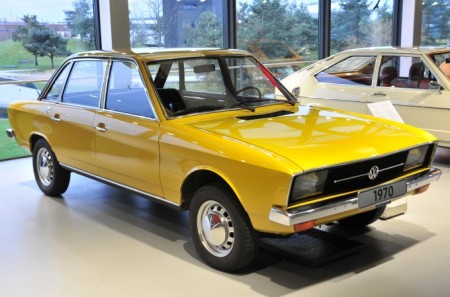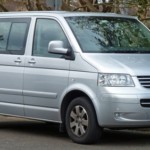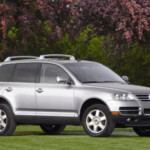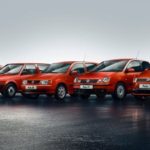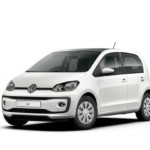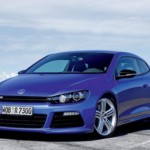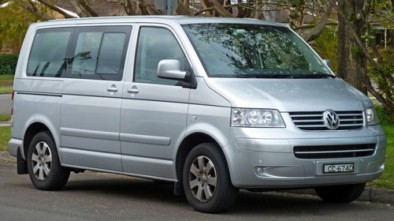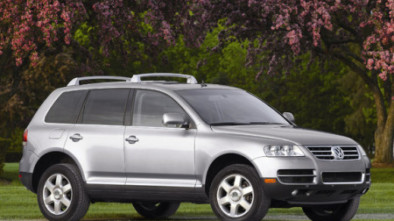Volkswagen K70 1970 - 1974 - History of cars
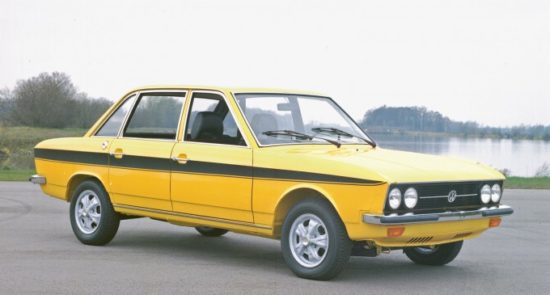
Volkswagen K70
This is the first "Volkswagen" with a front-mounted engine, water cooling and front-wheel drive. From the "Volkswagen K70" begins to write a new history of the company, which from that moment breaks with the past and becomes one of the most desirable brands in the world.
Many, especially younger readers, have never heard of this model. The Volkswagen K70 is the forerunner of all the modern VW cars we know today. Until its appearance, models with rear-mounted and rear-mounted motor were current.
It has been manufactured in about 210 copies, which is another reason why it is difficult to see on roads and streets.
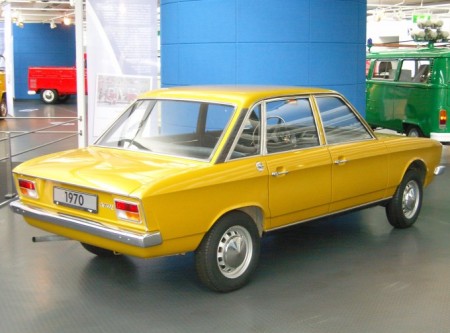
The car was developed by NSU and was taken over by Volkswagen
Story about "Volkswagen The K70 “begins in January 1965 when the development of this model begins. The car was actually developed by NSU which was later taken over by Volkswagen. Named in line with NSU's strategy, the model label also includes a technical concept; specifically, the famous "ro80" had a name that came from the rotary wankel engine that started it. Accordingly, "K" signified - a piston.
The "NSU K70" is otherwise intended to be the smaller brother of the aforementioned "ro80". The World Premiere was prepared for March 1969 at the Geneva Motor Show. Since it’s a download NSUVolkswagen was in sight, the fate of the "K70" became very implausible, as it was very close in size and price to the "Audi 100" just presented. VW people are rumored to have removed the "K70" from the fair hall the night before Geneva's press day.
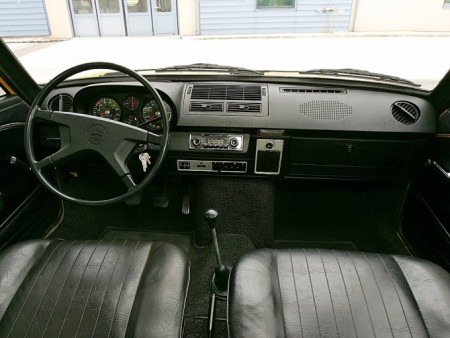
A modern and prestigious dashboard
Volkswagen, which a month later officially takes over NSU and merges it with its daughter company Auto Union, otherwise taken over by Daimler in 1964. The "K70" wants to use as a successor to its "type 4" model ("VW 411" and "412" made on the "bug" platform) that has failed in the market.
Seeing that its modern design and front-wheel-drive concept with a forward-facing engine is the perfect way to change the factory's image so far, VW is destroying all the propaganda material that sees the "K70" with the NSU sign.
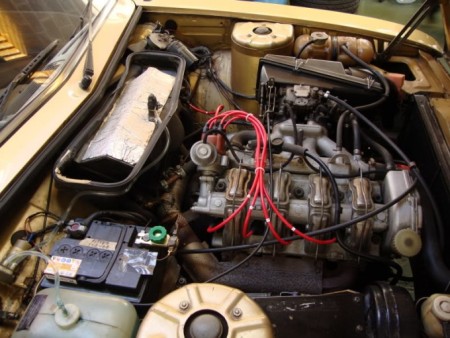
A typical NSU engine head
Instead of the factory where it was originally supposed to be manufactured in Neckarsulm, the car starts leaving the Salzgiter factory. Even today, the factory is successfully operating under the auspices of Volkswagen, and the only model to be manufactured was the "K70". After that, the factory is dedicated to making engines and transmissions for the VW Group.
Production of "K70" begins in August 1970 and immediately goes into export. The launch date of the station wagon is increasingly delayed, so it turns out that it will never see the light of day.
Under the hood of this model was initially a four-cylinder water-cooled engine - originating from the one installed at the rear of the "NSU Prince 1200", which at one time was assembled in Sarajevo under the sign PRETIS (Tito Sarajevo).
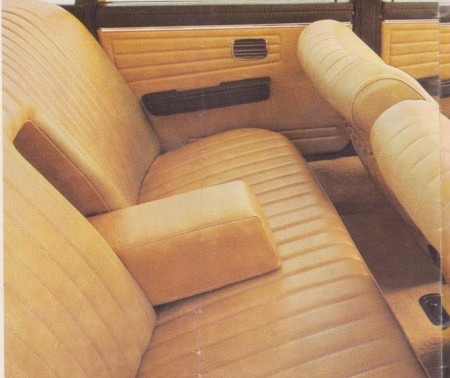
A real limo
Its working volume was increased to 1605 cc, and despite the number 70 in the name, the power was 75 "horses". The engine is positioned longitudinally, just above the differential and between the front wheels. The clutch and gearbox were just behind the differential, and the complete set-up of the elements was such that it provided a very spacious cabin and easy operation of the mechanic. For example, the blade could have been replaced without moving the engine or gearbox.
Despite its highly modern design during this time, the engine did not provide adequate performance and did not meet the consumption criteria, since the 1973 oil and gas market crisis followed. During that year, an engine with a larger piston diameter and increased displacement to 1807 cc, with a total power of 100 hp, was introduced. He also received new engine mounts that reduced cabin vibration and noise.
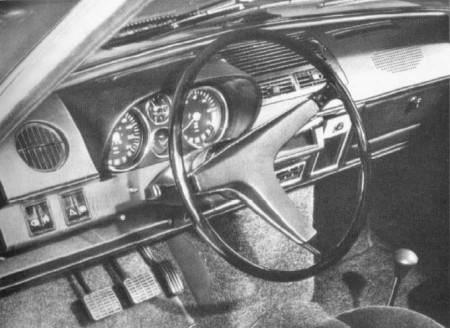
One of several interior versions
Despite all the improvements, the still air-cooled 'VW 412' was still more economical, but with slightly lower performance. It allowed a top speed of 162 instead of 148 km / h, and accelerated to "13" in round 16 instead of XNUMX seconds.
In the meantime, a smaller variant of the smaller 1,6 engine was introduced, which received increased compression and 90 instead of 75 "horses," while performance was minimal behind the 1,8 engine. The average consumption was even and ran about 13,5 l / 100 km with the Solex carburetor, which was not acceptable at the time.
With the end of production in 1975, its engines ceased production. Brand new engines or borrowed from Audi have been designed for the Passat, Golf, Broad and Polo.
For its lifetime, the K70 has had two restyls - the first in 1971 received bumpers from the "Audi 100", and a year later in the second, it received a more aerodynamic hood, improved engine cooling and new brakes. Then introduced the "L" luxury variant, which had dual round headlights with halogen bulbs, but also a new steering wheel.
Also interesting is that it had front disc brakes that were located next to the gearbox itself. This solution made it possible to reduce unhindered mass but at the same time made it difficult to service. How advanced it was is the fact that the steering wheel is designed to move upwards in the event of a collision, while the fuel tank is placed under the rear seats for safety reasons. Seat belts were an option, though the holes for mounting them were drilled as standard.
A total of 211.127 units were produced, and the fact that it had no common components with other Volkswagen models during that time was due to the short life span of the model. For this reason, production became too expensive and was discontinued.
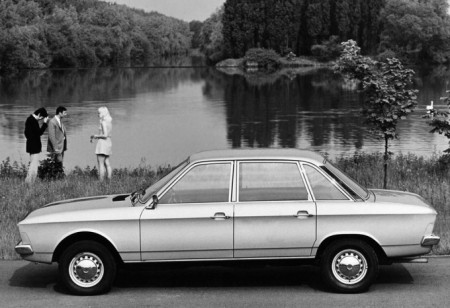
Volkswagen K70
Adopted, no heirs
The "K70" was practically a finished product that Volkswagen was manufacturing as its own. Its production lasted only five years because it had no common components with the new VW models, so it was automatically unprofitable.
Basically, the K70 had no official successor. This was followed by the emergence of the "Passat" in 1973, which was lower positioned, and the primary task of the "Passat" was to replace the "VW 1600". It is quite logical that it served as an excellent basis for developing even better models. It will remain remembered as a car that somehow made Volkswagen management aware of turning a new leaf and forever changing the course of automotive history.
He showed that this concept with a pre-installed engine and front-wheel drive brings a lot more space in the cabin as well as the boot, whose volume was as high as 585 liters. How advanced it is is that its wheelbase (2690 mm) is only 22 millimeters shorter than today's "pasat", and as much as 220 mm longer than the "first generation" pasat, or 15 mm longer than its contemporary, "Audi 100 ".
Claus Luther
The engineering concept of the “K70” was credited to Claus Luthe. This man was not only a classic designer but also a revolutionary in terms of engineering solutions. He started his career at Fiat where he participated in the design of the Fiat 500, which appeared in 1957. Immediately after that, he moved to NSU where he designed the second generation of the "NSU Prince" in the same fashion as the Chevrolet Corvette.
He also designed a "ro80" with a rotary vancel engine, a car that still captures its proportions and advanced aerodynamics, but also some of the most important Volkswagen and Audi models - the "Audi 50" or "first generation VW polo", the "Audi 80" and " second generation Audi 100 ”.
As head of BMW's design department, he is responsible for the design of numerous models - second generation "5" (E28), second and third generation "3" (E30 and E36), second generation "7" (E32), beautiful " Series 8 ”(E31) and third generation“ Series 5 ”(E34).
Posted by: Aleksandar Bursac
Retrieved from: www.magazinauto.com
Recommendation of similar texts:

Hi there, I am Mladen and I am an auto enthusiast. I started this blog years ago to help like minded people share information about latest cars, car servicing ideas, used car info, exotic cars, and auto technology. You will find helpful articles and videos on a wide variety of cars - Audi, Mercedes, Toyota, Porsche, Volvo, BMW and much more. Ping us if you have anything cool to share on latest cars or on how to make older cars more efficient, or just want to say hi!

